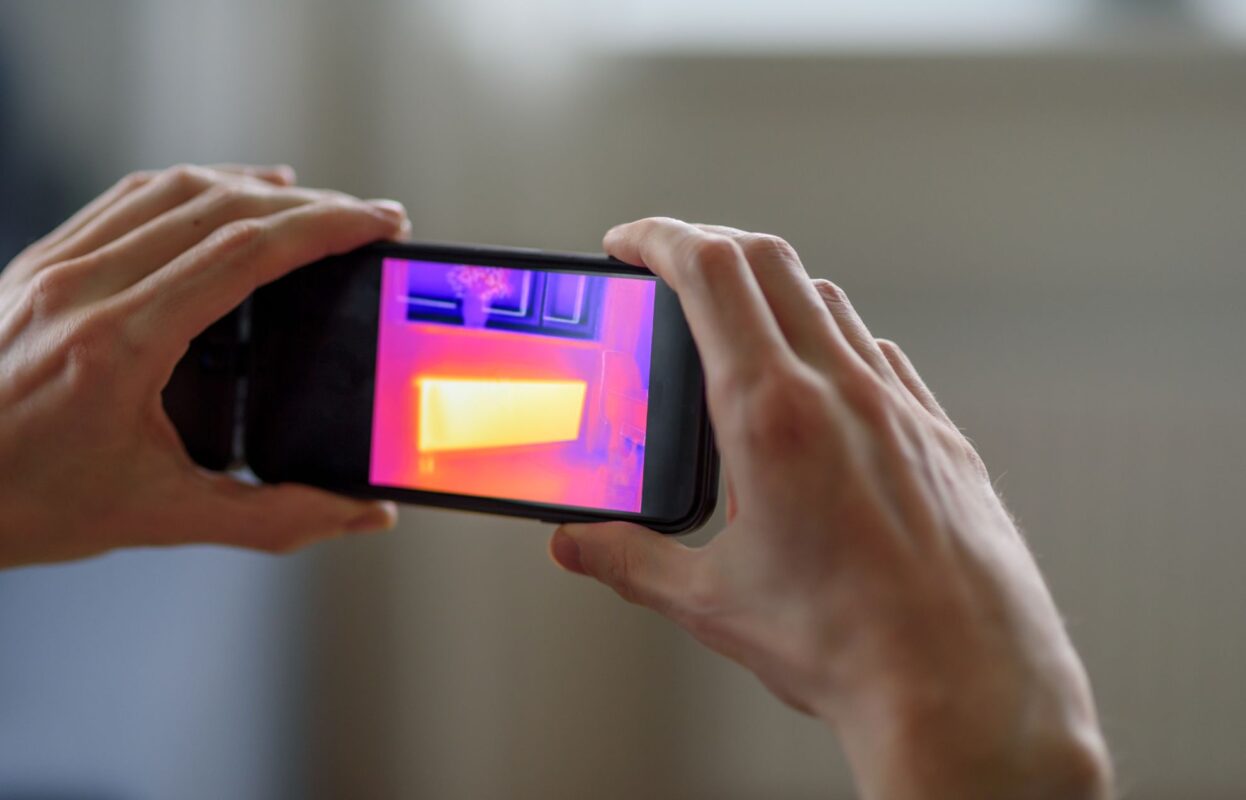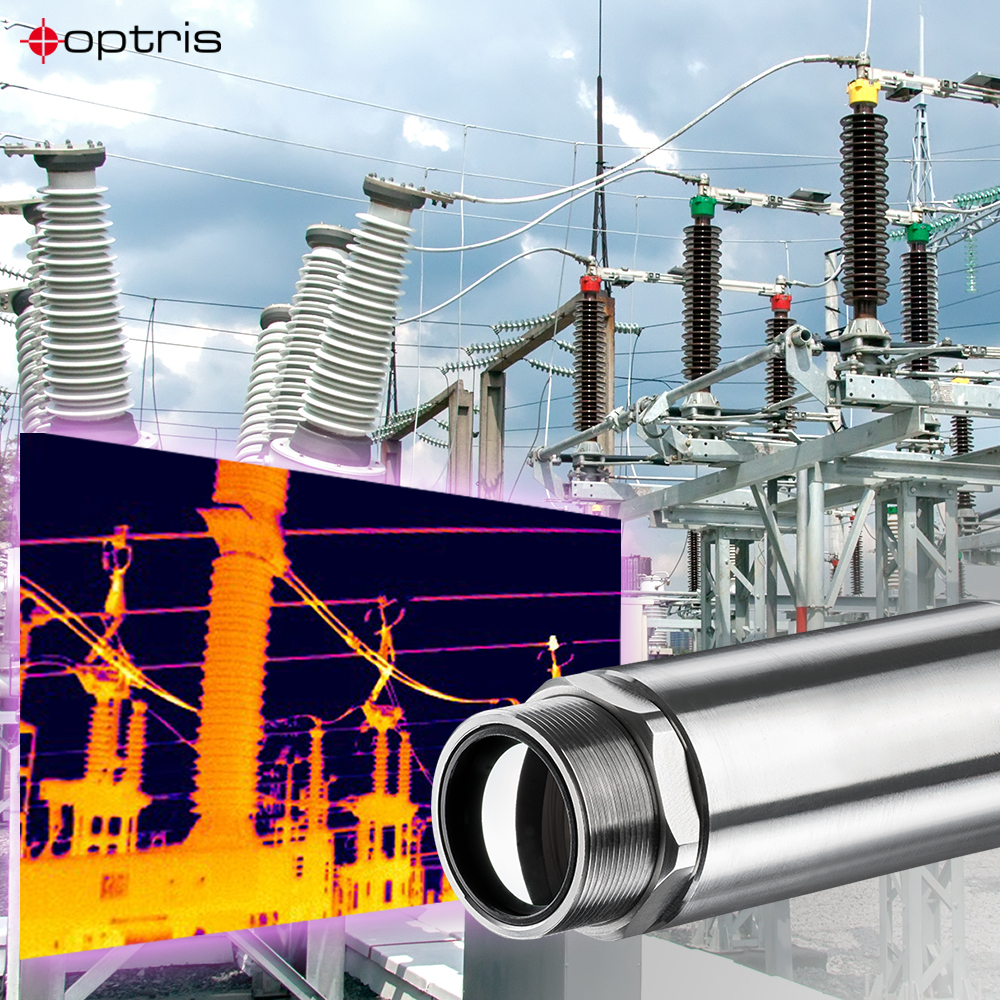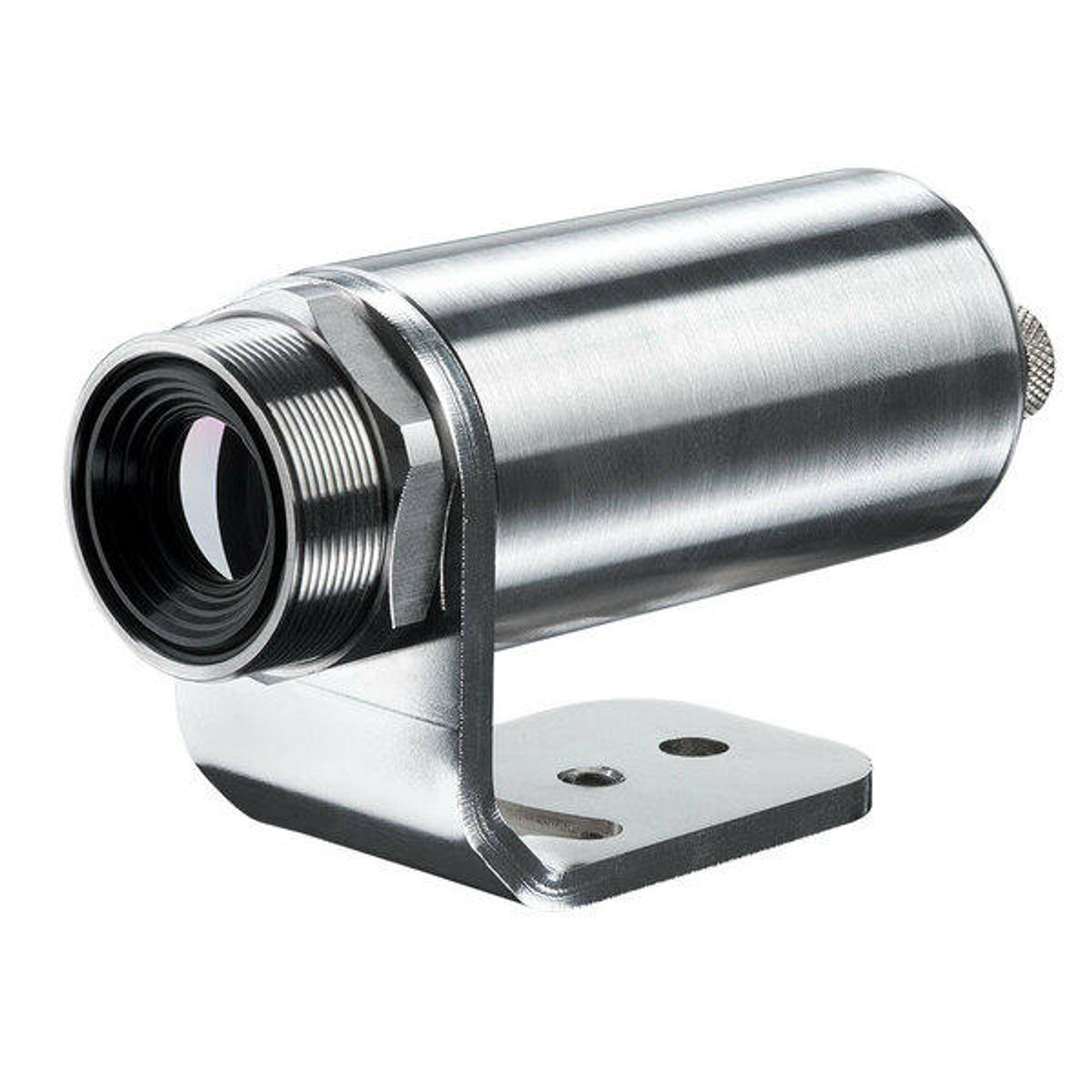What is Optical Resolution? A Complete Guide
Optical Resolution of a Camera and Lens System
Thermal cameras offer a unique perspective, revealing the world through the lens of heat. But within this technology lies a crucial concept: optical resolution.
Optical resolution plays a big role in how clear our images turn out, and getting to grips with it is key if we want pictures that are both accurate and sharp.
In this guide, we’ll explore what optical resolution means, and its impact on thermal image quality.
What is Optical Resolution?
Optical resolution refers to the ability of an imaging system to distinguish and capture fine details in an object or scene. It’s a measure of how clearly a camera, microscope, or other optical device can resolve small, closely spaced features as distinct and separate elements in the final image.
In technical terms, optical resolution is often expressed as a ratio or in dots per inch (dpi) for scanners and digital cameras. For optical instruments like microscopes or telescopes, it might be expressed in terms of angular resolution or spatial resolution.
Optical resolution is determined by various factors:
- The quality and design of the lens system
- The size and density of the sensor’s pixels (for digital systems)
- The wavelength of light being used
- The aperture of the system
Thermal imaging cameras, just like normal digital cameras, are using a field of view (FOV) which can cover angles of 6° for a tele lens, 26° for a standard lens and up to 90° for a wide-angle lens. The further you get from the object, the larger the captured image region, and with it, the image detail that an individual pixel can capture.
Understanding optical resolution is essential for selecting appropriate imaging equipment for specific tasks and interpreting the resulting images accurately.
At Process Parameters, we’re a UK distributor of Optris thermal cameras. Contact our team to discuss your application and find out how thermal imaging can improve your process.
Send An Enquiry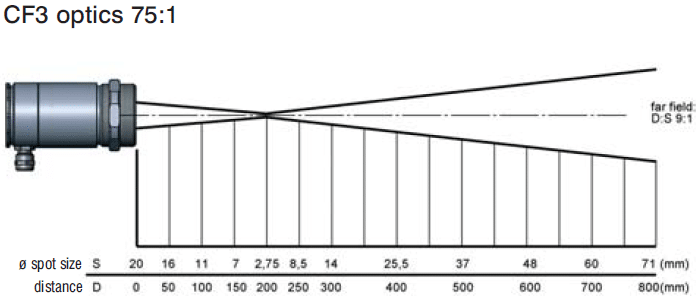
What is the Meaning of E:M in Optical Resolution?
In the context of optical resolution (E:M), the “E” and “M” represent two specific distances in the measurement system, not a general term. Here’s the breakdown:
- E: This refers to the distance between the measurement object and the measurement device. In other words, it’s the separation between the object you’re trying to measure the temperature of and the thermal camera itself.
- M: This refers to the diameter of the measuring spot. Imagine the thermal camera focusing the object’s thermal radiation onto a detector. The “measuring spot” is the tiny area on the detector where this radiation is concentrated. Its diameter essentially tells you how small of a temperature variation the camera can detect.
Therefore, E:M (Distance from object to device) : (Diameter of measuring spot) represents the ratio that determines the optical resolution of the thermal camera. A higher ratio (larger object distance compared to the measuring spot size) signifies better optical resolution, allowing for capturing finer details and temperature variations.
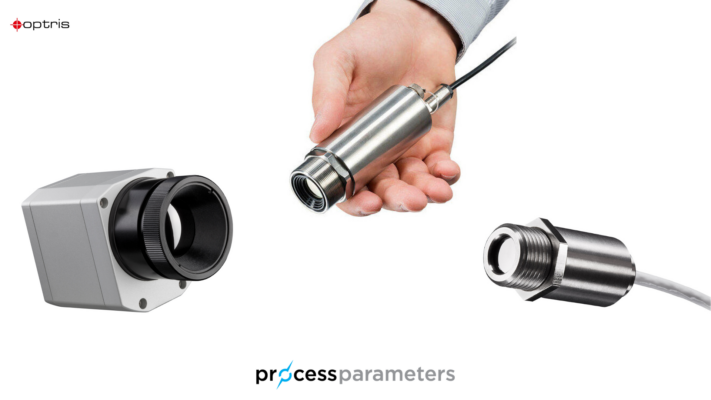
Key Factors Influencing Optical Resolution in Thermal Cameras
Optical resolution matters significantly when choosing a camera for industrial applications for several reasons.
Thermal cameras with high optical resolution offer industries enhanced defect detection, precise temperature measurement, and improved safety monitoring. They enable detailed analysis in applications like predictive maintenance, condition monitoring, quality control, and energy auditing across various sectors.
Here are some key factors to consider when selecting a camera:
1. Image detail: Higher optical resolution allows thermal cameras to capture finer details and smaller temperature differences in a scene. This is crucial for detecting subtle heat patterns or small heat sources.
2. Measurement accuracy: Better optical resolution enables more precise temperature measurements, especially for small or distant objects. It reduces the risk of averaging temperatures across larger areas.
3. Detection range: Improved optical resolution allows thermal cameras to detect and identify heat sources from greater distances, which is particularly important in surveillance and industrial applications.
4. Spatial resolution: This determines the smallest detectable object at a given distance. Higher optical resolution improves spatial resolution, allowing the camera to distinguish between closely spaced heat sources.
5. Image quality: Higher resolution generally results in clearer, sharper thermal images, making interpretation easier and more accurate.
6. Minimum resolvable temperature difference (MRTD): This is the smallest temperature difference the camera can detect. Better optical resolution often correlates with improved MRTD.
7. Field of view (FOV): While not directly related to resolution, the optical system’s design affects both resolution and FOV. Higher resolution systems often allow for a wider FOV without sacrificing detail.
8. Cost and complexity: Higher-resolution thermal imaging systems typically require more sophisticated optics and sensors, which can increase cost and complexity.
9. Data processing requirements: Higher-resolution thermal images contain more data, which may require more powerful processing capabilities for real-time analysis.
10. Application suitability: The required optical resolution depends on the specific application. For example, building inspections might need lower resolution than military targeting systems.
Choosing the right optical resolution involves balancing these benefits against factors like cost, processing requirements, and specific application needs.
Our team at Process Parameters can help you make an informed choice for your application.
Send An EnquiryOptical Resolution Examples in Thermal Imaging by Industry
Here’s a breakdown of typical optical resolutions used in thermal cameras across various industries and applications:
Industry | Application | Typical Resolution | Reasoning |
Building Inspection | Identifying air leaks, insulation deficiencies | 160×120 to 320×240 | Focuses on larger areas to detect overall temperature variations. |
Predictive Maintenance | Monitoring machinery for overheating and fire detection | 320×240 to 640×480 | Needs to see details like hot spots on bearings or electrical components. |
Firefighting | Locating victims, spotting fire spread | 320×240 to 640×480 | Balance between seeing a broader area and identifying smaller heat sources like survivors. |
Security & Surveillance | Perimeter monitoring, detecting intruders | 320×240 to 640×480 | Prioritizes coverage of larger areas for general movement detection. |
Law Enforcement | Search & rescue, suspect apprehension | 640×480 or higher | Requires high detail for identifying individuals and objects at longer distances. |
Research & Development | Studying thermal properties of materials | 640×480 or higher | Needs exceptional detail to capture subtle temperature variations in experiments. |
For almost all applications in the industry, resolutions between 160 x 120 and 640 x 480 pixels (pin-sharp VGA resolution) are totally sufficient. Today, compact infrared cameras are best suited to quick online applications in the analysis of dynamic thermal processes.
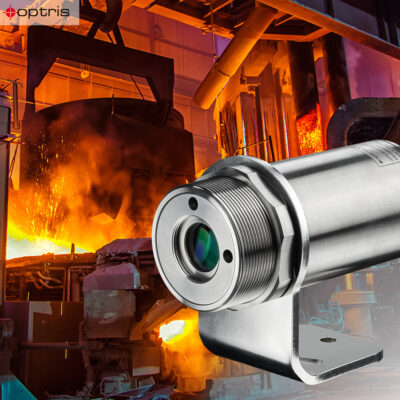
Thermal Cameras From Process Parameters
Choosing the right thermal camera depends on your requirements. If you need to see a large area and identify general heat sources, a wider field of view with a lower resolution might suffice.
However, if you need to zoom in and see finer details on smaller objects, a higher optical resolution with a narrower field of view would be preferable.
At Process Parameters, we supply Optris thermal cameras and infrared thermometers which are renowned for their next-level thermography. From high-temperature thermometers to industrial thermal cameras for condition monitoring and early fire detection, we can help.
We also offer a calibration service if required. See more about our calibration services.
If you have any questions or need help finding the right IR camera for your application, please get in touch. Complete our online enquiry form, email sales@processparameters.co.uk or call 01628 778788.
Send An EnquiryIndustrial Thermal Imaging Cameras
Industrial Thermal Imaging Cameras
Optris PI400i/PI450i High Resolution Thermal Imaging Cameras
Industrial Thermal Imaging Cameras
Industrial Thermal Imaging Cameras
Frequently Asked Questions
What does optical resolution mean?
Optical resolution refers to the finest detail an imaging system can capture. Imagine it as the sharpness of your vision. It depends on the quality of lenses, detectors, and even the environment. Higher resolution means capturing more image details. Think of a high-resolution camera capturing individual hairs on someone’s head, while a low-resolution camera might only show a blurry figure.
How does optical resolution affect thermal imaging cameras?
Optical resolution impacts thermal imaging cameras in two key ways:
- Image Detail: Just like regular cameras, higher optical resolution in thermal cameras allows you to see finer details in the captured image. This translates to better distinguishing objects and identifying smaller temperature variations. Imagine trying to tell the difference between a small dog and a large cat on a blurry thermal image – higher resolution makes that distinction clearer.
- Field of View (FOV): There’s a trade-off between optical resolution and field of view. Higher resolution cameras typically have a narrower field of view. This means you see a smaller area in greater detail. Conversely, lower resolution cameras often have a wider field of view, allowing you to see a larger area, but with less detail on individual objects within that area.
Is higher optical sensor resolution better?
Higher optical sensor resolution can be better, but it’s not the only important factor. In optical microscopy, a higher resolution allows for distinguishing smaller separate entities. However, factors like numerical aperture, wavelength, and diffraction also play crucial roles. The resolving power of a microscope depends on these elements, not just pixel size in digital systems.
How to increase optical resolution?
To increase optical resolution, consider using shorter wavelengths (like ultraviolet light instead of visible light) or increasing the numerical aperture of the objective lens. Improving the refractive index of the medium between the lens and specimen can help. In digital systems, reducing pixel size can increase resolution, but only up to the diffraction limit set by the optical system’s properties.
How do you measure optical resolution?
Optical resolution is often measured using the Rayleigh criterion, which defines the minimum distance between two point sources that can be resolved as separate entities. In practice, test patterns with line pairs of known spacing are used. For digital systems, resolution can be measured up to the Nyquist frequency, which is related to pixel size. The limit of resolution depends on the wavelength and numerical aperture.
What is the difference between optical resolution and spatial resolution?
Optical resolution refers to the ability of an optical system (like a microscope) to distinguish between separate entities, based on factors like wavelength, numerical aperture, and diffraction patterns. Spatial resolution, often used in digital imaging, relates to the smallest discernible detail in an image, typically determined by pixel size. While related, optical resolution is fundamentally limited by physics, while spatial resolution can be influenced by the camera system’s specifications.
Related Thermal Imager Guides:
- How Do Thermal Imaging Cameras Work?
- Can a Thermal Camera See Through Walls?
- How Does an Infrared Thermometer Work?
- Choosing an Infrared Pyrometer
- What is an Infrared Thermometer?
- Why is a Pin Sharp Thermal Image Important?
- How Can a Thermal Imaging Camera Become Part of Your Process?
- Can You Improve Your Thermal Efficiency With Imaging Cameras?
- How Accurate Are Infrared Thermometers?
- What is a Line Scan Camera?
- What is a Pyrometer?

